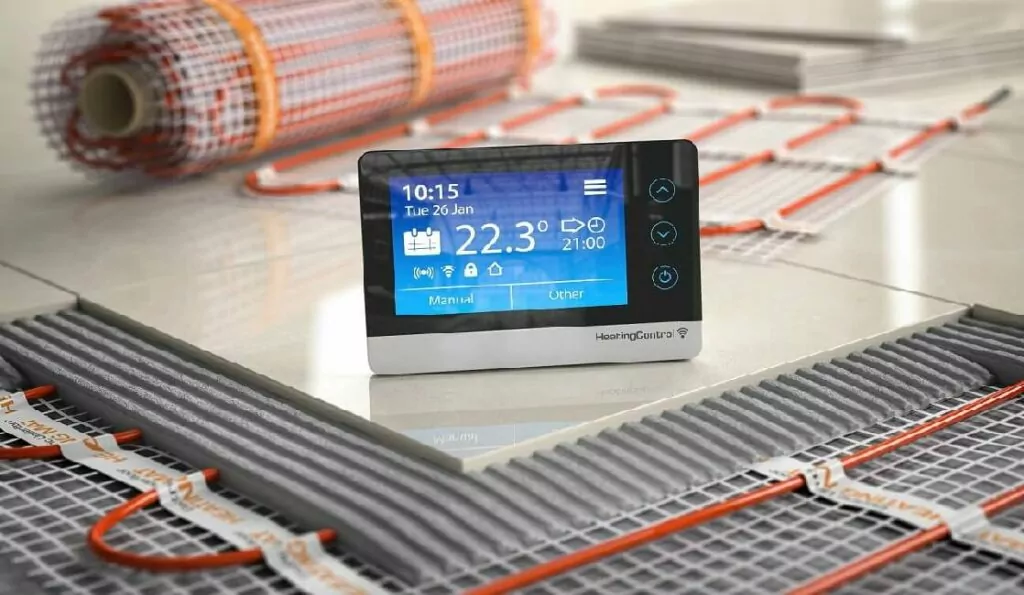After bathing procedures, you always want comfort. But this is out of the question if you step on icy tiles from your hot bath tube. How to solve this problem? You should think over the installation of radiant floor heating in your bathroom. Is this variant worth trying? Our guide is here to help you decide whether you need such technology in your house.
WHAT IS ELECTRIC FLOOR HEATING?

“Heated floors” is a heating system that provides underfloor heating in the room. This is a modern and convenient way to heat a bathroom or the entire home at any time of the year. The most common types are electric and hydronic heating system (water).
Water floor heating systems consist of a device that heats water and distributes it through the system, as well as pipes mounted in concrete through which water flows.
The electric floor heating system consists of heating mats and regulators. Heating mats are laid under the floor. They can be placed between concrete layers, poured with self-leveling concrete or laid in adhesive under a tile. The design provides strength, durability and safety of warm floors.
PROS
It guarantees moderate and even heating
Electric radiant floor means the room is being heated evenly – there is no central source of warmth. Besides, there is no dust circulation due to uniform heat fluxes, and there are no electromagnetic fields in comparison with electric heat-insulated floors.Due to the presence of a constant circulation of convection air flows in the room, the smallest dry particles, microorganisms that can cause allergic and negative reactions to the human body move with these layers of air.
It is ideal for bathrooms
Since the floor in bathrooms is typically made in tiles, the heating system warms up the material smoothly. With a radiant heating system, you can set up the necessary temperature schedule which will be better perceived by our body than from the heat coming from the battery. A uniform distribution of heat in bathroom makes it cozier. Besides, it allows saving space in the bathroom because the floors are located under the tiles. Warm floors eliminate the risk of injuries and burns. This is a safer solution than radiators and batteries.
Both heating types are possible
Both hydronic radiant floor heating and electric options can be used in bathroom because tiles are water-resistant and don’t collect electric charge. Most often, users choose electric radiant floor heating (65%), while 35% of users prefer water floor heating system. Generally speaking, the type of system to be installed will depend on the size and shape of the room, insulation, and renovating project.
CONS
It should be installed by professionals only
Whatever you choose – electric or water-based heating – trust this task to professionals to avoid mistakes and accidents. All in all, heating system is pretty complicated and requires work with the electric layout. Hiring professionals means wasting more money, but there is no trade-off.
In case of failures, the floor should be reinstalled
If something goes wrong with the heating elements, you will have to disassemble the floor, which means you can break the tiles. This fact makes repair works a costly and time-consuming process, but once again, there’s no other option.
This is a costly solution
Electric energy is an expensive source of warmth, so you have two options:
- Deal with high electricity bills;
- Install a smart system that for controlling and scheduling temperature.
Despite its drawbacks, heated floor is a great solution for those who want to add comfort to their bathroom, so don’t hesitate to contact your contractor and discuss the details.
Turning to the Groysman Construction Remodeling Company, the experts will help you implement the best solutions.





